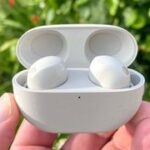Comparing cell contents and understanding formulas can be challenging in Excel. This article demonstrates a powerful technique using the formula bar, nested SUBSTITUTE functions, FORMULATEXT, and CELL("address") to display formulas with their actual values and labels, making comparison and analysis easier.
Deconstructing the Formula for Clarity
The core of this method lies in converting a formula into a human-readable format. Let’s break down a complex example:
=SUBSTITUTE(SUBSTITUTE(SUBSTITUTE(SUBSTITUTE(SUBSTITUTE(SUBSTITUTE(SUBSTITUTE(SUBSTITUTE(SUBSTITUTE(FORMULATEXT(I6),"$",""),SUBSTITUTE(CELL("address",G6),"$",""),TEXT(G6,"$#,##0.00")&" "&$G$5),SUBSTITUTE(CELL("address",H6),"$",""),H6&" "&H5),SUBSTITUTE(CELL("address",F6),"$",""),TEXT(F6,"$#,##0.00")&" "&$F$5),SUBSTITUTE(CELL("address",E6),"$",""),E6&" "&$E$5),SUBSTITUTE(CELL("address",D6),"$",""),ROUND(D6,2))&" "&$D$5,"*"," × "),"-"," - "),"/"," ÷ ")This formula may seem daunting, but it’s built upon a logical structure:
-
FORMULATEXT(I6): This extracts the formula from cell I6 as text. -
Nested
SUBSTITUTEFunctions: These progressively replace cell references with their corresponding values and labels. EachSUBSTITUTEpair targets a specific cell:SUBSTITUTE(CELL("address",G6),"$",""),TEXT(G6,"$#,##0.00")&" "&$G$5: This section replaces the reference to cell G6 with its formatted value and the label from G5. TheCELL("address")function returns the cell address, which is then stripped of the “$” symbol for absolute referencing usingSUBSTITUTE. This process is repeated for other cell references (H6, F6, E6, D6).
-
Formatting Enhancements:
TEXT(G6,"$#,##0.00")formats numerical values;"$G$5"adds the column header from row 5 as a label; replacing operators like “*” with ” × “, “-” with ” – “, and “/” with ” ÷ ” enhances readability.
Adapting the Formula to Your Needs
The number of nested SUBSTITUTE functions directly corresponds to the number of cell references within your original formula. To modify this solution:
- Add more variables: Introduce more nested
SUBSTITUTEpairs, ensuring each targets a new cell reference. - Reduce variables: Remove unnecessary
SUBSTITUTEpairs. - Customize Formatting: Adjust the
TEXTfunction to control the display of numerical values. For instance,TEXT(F6,"$#,##0.00")formats the value in F6 as currency.
Practical Application: Enhancing Formula Comparison
Consider a simple example:
| Chickens | Eggs per Chicken | Total Eggs |
|---|---|---|
| 5 | 4 | =B2*C2 |
| 3 | 9 | =B3*C3 |
Applying the described formula to the “Total Eggs” column would yield:
= 5 Chickens × 4 Eggs per Chicken
= 3 Chickens × 9 Eggs per Chicken
This clearly shows the calculation behind each result, facilitating comparison and error detection. By replacing abstract cell references with concrete values and labels, this technique transforms complex formulas into understandable statements. This method empowers users to dissect, compare, and verify calculations within their spreadsheets with significantly improved clarity.
